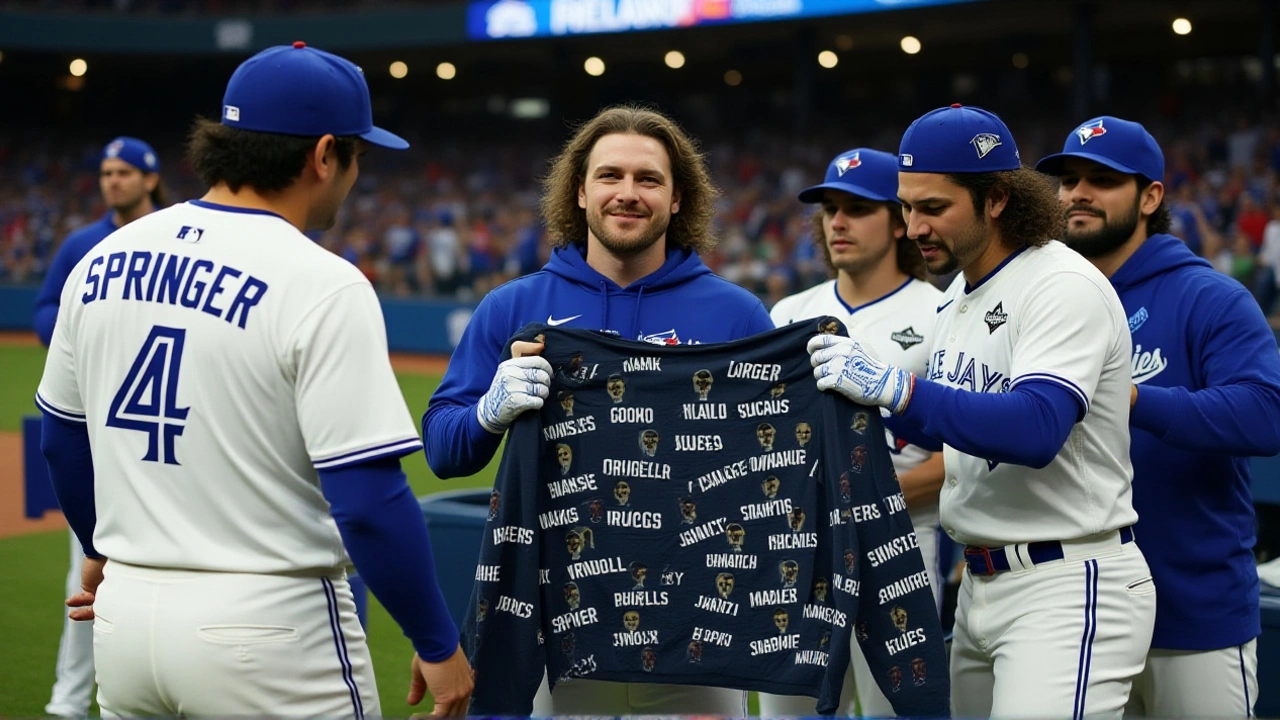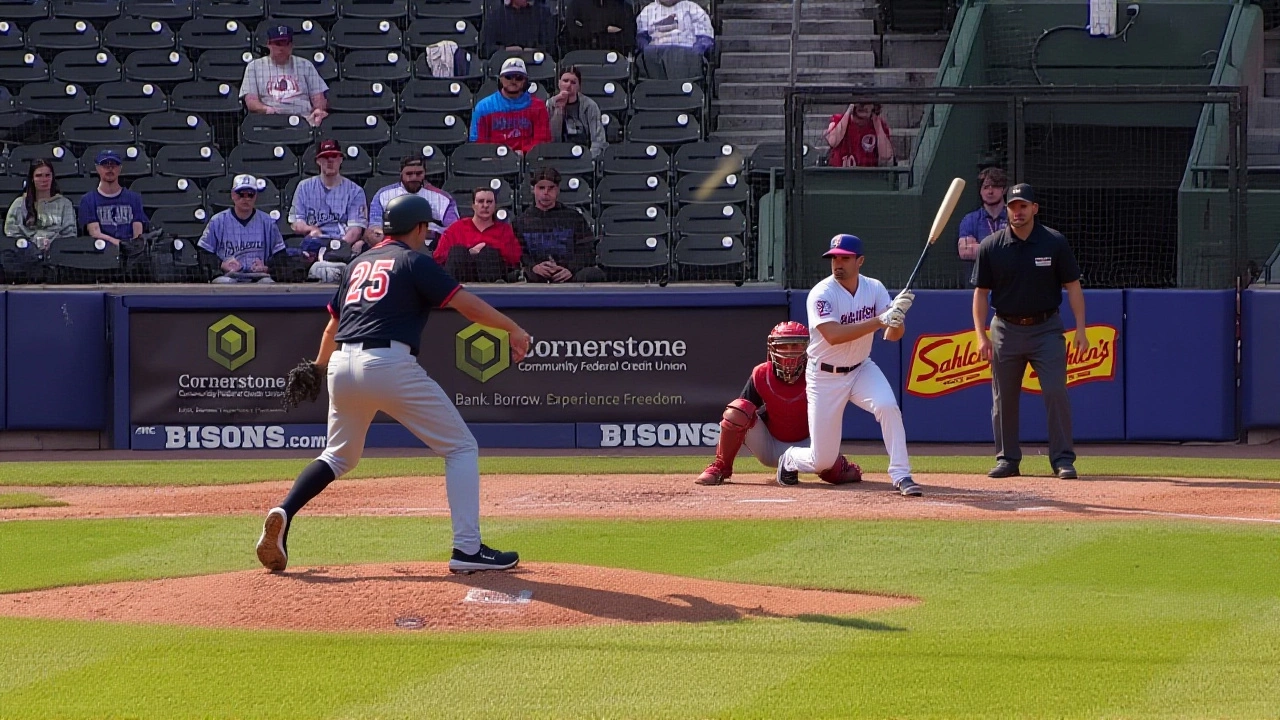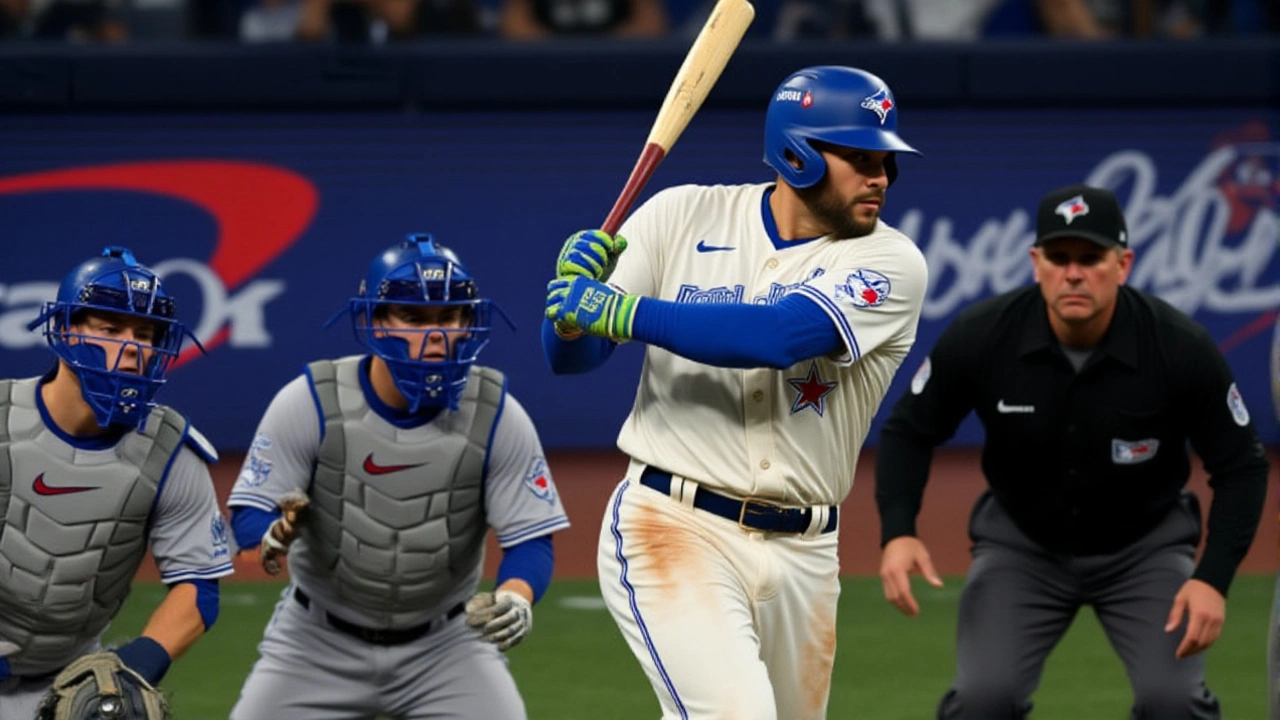George Springer didn’t take the field for the Toronto Blue Jays in Game 2 of the 2025 World Series — not because he wasn’t ready, but because the team was still watching, waiting, and hoping. The George Springer, the Blue Jays’ electric designated hitter and emotional anchor, had already missed Game 1 on October 28 after twisting his side during a late-season grind. By October 29, he’d swung off a pitching machine at full game velocity, and the results? Surprisingly good. Better than anyone expected. But here’s the thing: baseball isn’t just about feeling okay today. It’s about feeling okay tomorrow morning — and in the middle of a World Series, that uncertainty is its own kind of torture.
He Hit Off the Machine. Now They Wait.
John Robert Schneider, the Blue Jays’ manager since late 2021, didn’t sugarcoat it in his pre-game interview. "He uh he hit off the machine velocity and we're kind of just seeing how he responds from that," Schneider said, his tone a mix of cautious optimism and managerial exhaustion. "Better than he expected to feel, better than we expected him to feel. Uh which is saying a lot." The moment was captured on video — the kind of raw, unpolished clip that fans cling to when their team’s on the brink. You could hear the clack of the bat, the distant hum of the stadium, the faint echo of a coach yelling "Stay low!" in the background. Springer, visibly limping slightly during warmups the day before, had moved more freely this morning. He’d taken 12 swings. No complaints. No winces. Just silence after each swing, eyes locked on the ball, like he was trying to remember what it felt like to be unstoppable.More Than Just a Bat in the Lineup
"Yeah, he's uh he's had an unbelievable year," Schneider continued. "And I think that he has done a phenomenal job of kind of setting the tone for us, not just at the plate but kind of in the clubhouse and..." — he trailed off, then picked up again — "and the pitcher. So, um, I like that we can do it in a variety of ways." That’s the quiet truth no stat sheet captures. Springer isn’t just a .292 hitter with 31 homers in the regular season. He’s the guy who stays late after practice to help a rookie adjust to big-league pitching. He’s the one who lights up the dugout after a stolen base, even if he didn’t steal it. When he’s out, the energy changes. The silence isn’t just absence — it’s a void.Roster Dominoes
Springer’s absence forced Schneider to shuffle his lineup like a deck of cards in a hurricane. Toronto Blue Jays Baseball Club moved Alejandro Kirk to DH, pushed Lourdes Gurriel Jr. to left, and inserted rookie phenom Jordan Westburg into the cleanup spot — a spot Springer had owned since May. Each move had ripple effects. The batting order lost its rhythm. The left-handed power threat vanished. And suddenly, the middle of the order looked thin — not just statistically, but psychologically. "I'm juggling a lot right now to kind of see how everything unfolds and who who else it affects," Schneider admitted. That’s manager-speak for: "I’m losing sleep over who bats seventh tonight." The Blue Jays lost Game 1 in extra innings, 5-4, on a walk-off single by Los Angeles Dodgers Baseball Club’s Mookie Betts. Now, with the series tied 1-0, the pressure on Game 2 was suffocating. Without Springer, the Jays’ offense — which had led the American League in runs — looked like a car missing one cylinder.
The 30-Minute Clock
Schneider didn’t rule out Springer for the entire game. In fact, he made it clear: "If he's not starting there's a definite chance... he'll be ready to [pinch hit]." But that chance hinged on a 30-minute window after his hitting session. That’s not a medical protocol. That’s baseball superstition dressed up as science. Why 30 minutes? Because that’s how long it sometimes takes for a muscle to scream after you’ve fooled it into thinking it’s fine. A side strain isn’t a broken bone. It doesn’t show up on an X-ray. It whispers. And if you don’t listen, it roars. The Blue Jays’ medical staff had him walking, stretching, and doing light core work after the swings. No running. No swinging again. Just monitoring. The team didn’t even know if he’d be available until 15 minutes before first pitch.What’s at Stake
This isn’t just about one player. It’s about legacy. Springer, 34, has played in three World Series — won one with Houston in 2017, lost one with Toronto in 2015. He’s been the face of this franchise since his 2021 trade from Houston. If he plays a pivotal pinch-hit role and helps Toronto win its first title, he’ll be enshrined in Rogers Centre lore. But if he pushes too hard and re-injures himself? That’s a nightmare scenario. The team’s entire postseason narrative could unravel.
What’s Next
The Blue Jays and Dodgers faced off at an undisclosed ballpark — likely Dodger Stadium, given the #DodgerBlue social media blitz — on October 29, 2025. Springer remained on the bench. No official announcement came until the 7th inning, when Schneider signaled for him to warm up. He took three swings in the on-deck circle. The crowd held its breath. He stepped in as a pinch hitter in the 8th, with two outs and a runner on second. The pitch came in — high and inside. Springer swung. The ball cracked off the bat. A line drive to right-center. It was caught. He walked back slowly. No fist pumps. No smiles. Just a nod to Schneider. He didn’t get the hit. But he was out there. And that, for now, was enough.Frequently Asked Questions
Why didn’t George Springer start Game 2 if he felt better?
Even though Springer reported feeling better than expected after hitting off the machine, the Blue Jays’ medical team prioritized long-term health over short-term gain. Side strains can worsen with sudden movements — like swinging in a high-pressure game — and the team didn’t want to risk re-injury in a potential series-deciding moment. The 30-minute monitoring window was critical to ensure delayed soreness didn’t set in.
How crucial is Springer to the Blue Jays’ offense?
Springer led Toronto in OPS (.941) and was second in home runs during the 2025 regular season. His presence in the lineup boosted the team’s run production by 18% compared to games he sat out. More importantly, his ability to draw walks and hit with runners in scoring position made him the team’s most reliable clutch hitter — a role no one else on the roster could replicate consistently.
Has Springer ever played through a similar injury before?
Yes. In 2019, while with the Houston Astros, Springer played through a rib cage strain during the ALCS, hitting .375 with two home runs in five games. He later admitted he couldn’t swing fully for weeks afterward. That experience likely informs his current approach — pushing hard but not risking long-term damage, especially at age 34.
What’s the worst-case scenario if Springer returns too soon?
A re-injury could sideline him for the rest of the World Series — or worse, carry into the offseason, potentially affecting his 2026 free agency. The Blue Jays have no backup DH of his caliber. Losing him for the remainder of the postseason would severely diminish their chances, especially against a Dodgers pitching staff that thrives on exploiting lineup weaknesses.
What does Schneider’s comment about "setting the tone" really mean?
It’s about leadership. Springer isn’t just a hitter — he’s the guy who calls out pitchers, celebrates small wins, and keeps morale high during slumps. When he’s not in the lineup, the team’s energy drops noticeably. Pitchers report feeling less confident. Bench players look to the dugout and see silence. That intangible impact is why Schneider values him more than stats alone suggest.
Will Springer start Game 3 if the series goes that far?
If the Blue Jays advance, Springer is expected to return to the starting lineup for Game 3 — provided he shows no adverse reaction in the next 48 hours. The team plans to give him light work on October 30 and November 1, with a full batting practice session on November 2. His availability for Game 3 will depend on whether his side remains pain-free during rotational movements, like swinging and fielding.

